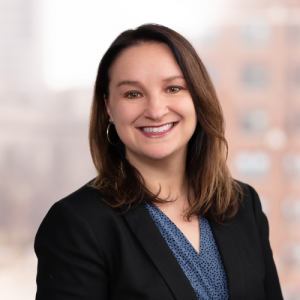On August 1, 2011, the Centers for Medicare and Medicaid Services (CMS) issued its Fiscal Year (FY) 2012 Inpatient Prospective Payment System (IPPS) Final Rule clarifying which outpatient services are required to be bundled with inpatient services in submission of Medicare claims. This billing policy is commonly known as the 3-Day Window Rule and is further implicated under proposed changes to the Calendar Year (CY) 2012 Medicare Physician Fee Schedule.
The 3-Day Window Rule was recently amended by the Preservation of Access to Care for Medicare Beneficiaries and Pension Relief Act of 2010 and was incorporated by CMS through the FY 2011 IPPS Final Rule. The amendment revised the standard for non-diagnostic services that are included in the payment window. Now, “other services related to admission” includes all services that are not diagnostic (other than ambulance or maintenance renal dialysis) furnished by the hospital (or entity wholly owned or wholly operated by the hospital) to the patient either on the date of the patient’s admission, or during the three (3) days immediately preceding the date of the patient’s admission unless the hospital demonstrates that such services are not related to such admission. For certain types of non-IPPS hospitals the statutory payment window is only one (1) day preceding the patient’s admission.
The amended statutory language only affected “non-diagnostic services” by establishing that non-diagnostic outpatient services “clinically associated” with the reason for admission must be bundled with the inpatient stay, while any non-diagnostic services not clinically associated with admission must be billed separately. Prior to the statutory change, the 3-Day Window Rule was rarely applied to non-diagnostic services because the policy required a match between the principal ICD-9 CM diagnosis codes for the outpatient services and the inpatient admission.
“Diagnostic services” provided to a Medicare beneficiary prior to inpatient admission continue to be bundled with the bill for the inpatient stay.
Hospital Attestation that Non-Diagnostic Services are “Unrelated” to Admission
The FY 2012 IPPS Final Rule elaborates on the process CMS established for hospitals to attest to preadmission non-diagnostic services being unrelated to a hospital inpatient admission. CMS previously announced through Program Transmittal 796 (Change Request #7142, October 29, 2010) the establishment of a new condition code for a hospital to attest on the outpatient claim identifying specific preadmission non-diagnostic services that are clinically unrelated to an inpatient hospital admission. As of April 1, 2011, condition code 51 must be added to preadmission claims for separately billed outpatient non-diagnostic services furnished on or after June 25, 2010, if the hospital wishes to attest to the non-diagnostic services being “unrelated” to a hospital inpatient claim. In addition, hospitals must retain documentation in the patient’s medical record to support their claim that the outpatient services are “unrelated” to the inpatient admission.
CMS declined to either clearly define “clinically associated outpatient non-diagnostic services” or return to the old policy requiring a match in diagnosis codes.
The Rule leaves the process of bundling claims unchanged and still requires the transfer of all information reported in the outpatient encounter to the inpatient setting/claim despite any administrative burden this may impose. Even though differences exist in coding outpatient and inpatient services, hospitals are still required to convert the codes and include them on any claim for outpatient diagnostic and clinically associated non-diagnostic services spanning the 3-day payment window.
Physician Practices – Proposed Payment Changes to 3-Day Window Rule
The 3-Day Window Rule applies to both preadmission diagnostic and related non-diagnostic services furnished to patients at hospitals, as well as entities wholly owned or wholly operated by a hospital. This includes physician practices and clinics owned or operated by a hospital that are not provider-based. In the FY 2012 IPPS Final Rule, CMS restated its prior policy that:
- “Wholly owned or wholly operated” means the admitting hospital must be the sole owner or operator providing the preadmission services in order for the 3-Day Window policy to apply.
- “Sole operator” means that a hospital must have exclusive responsibility for conducting and overseeing the entity’s routine operations, regardless of whether the hospital also has policymaking authority over the entity.
CMS is concerned about the amount of its payments to physician practices and clinics for services that are bundled based on the 3-Day Window Rule. Specifically, when a non-provider-based clinic or physician office is “wholly owned or wholly operated” by a hospital, the 3-Day Window Rule applies to all diagnostic and related non-diagnostic preadmission services, and payment to the hospital for these services theoretically includes the physician’s services overhead cost associated with the preadmission service. Since the physician would code the claim as a non-facility service, CMS is concerned that it is paying for the associated overhead costs twice – once when paying the hospital and again when it pays the physician for his/her services.
To address this cost issue, CMS proposes as part of the CY 2012 Medicare Physician Fee Schedule (MPFS) Proposed Rule that Medicare’s payment to the physician for the professional services should be at the lower MPFS facility payment rate rather than the higher non-facility payment rate. Medicare pays physicians using the non-facility payment rate when services are performed in a physician’s office, but uses the facility payment rate when the physician provides services in a hospital facility. When a physician provides services in a hospital-owned or hospital-operated physician practice or clinic that is not provider-based, they would designate the site of service as physician office or clinic and be paid based on the payment rate for a “non-facility setting.” Therefore, CMS has proposed to change the CY 2012 MPFS to pay physicians for services provided in a non-facility setting at the facility rate to avoid any duplicate payment.
This change is discussed in the CY 2012 MPFS Proposed Rule published in the July 19, 2011 Federal Register. Proposed changes include paying physicians for only the professional component for CPT/HCPCS codes with a PC/TC split and paying the facility payment rate for codes without a PC/TC split. This raises the question of how physicians will bill and be paid for certain non-diagnostic services and procedures and will require hospitals and the owned/operated physician practices to have systems in place to appropriately recognize and capture services that fall under the 3-Day Window Rule for purposes of hospital and physician office/clinic billing. In addition, the Proposed Rule discusses the time frames for application of the 3-Day Window Rule and the global surgical package as the two could overlap. Comments to the Proposed Rule are accepted until 5:00 P.M. on August 30, 2011. A Hall Render’s Health Law News article will be issued on these changes following publication of the CY 2012 MPFS Final Rule.
If you have questions regarding the 3-Day Window Rule, submission of comments for the CY 2012 MPFS Proposed Rule, or this article, please contact Regan E. Tankersley (rtankersley@wp.hallrender.com or 317- 977-1445), Lori A. Wink (lwink@wp.hallrender.com or 414-721-0456), or your regular Hall Render attorney.


